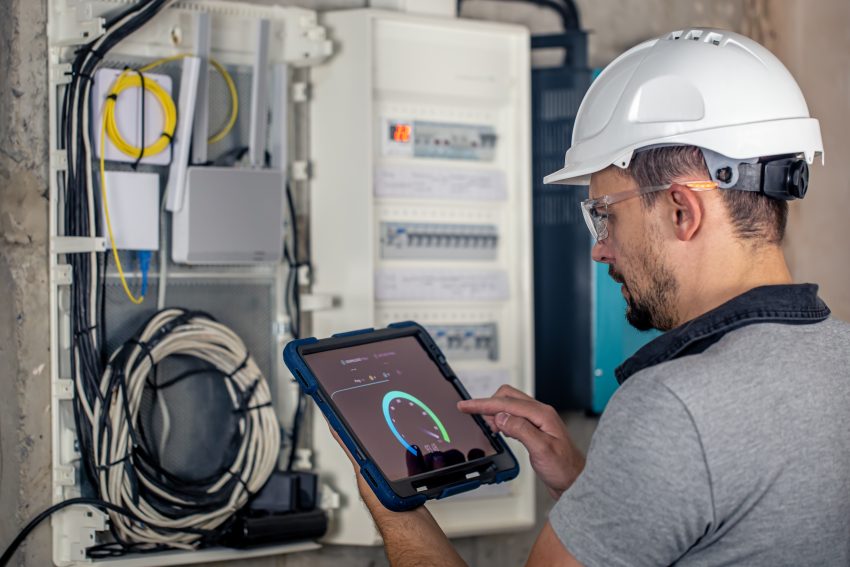If electrical systems are heavily used, they can pose serious dangers to people, their possessions and the way things are done. A variety of things like shocks, burns, fires and broken equipment can lead to bad consequences. So, it is crucial to carry out a thorough review of electrical risks. It allows risks to be identified, assessed and handled with the help of proper safety action. In addition, it makes it possible for companies to observe safety standards in their industry, thus safeguarding their workers and resources. An assessment that is carried out properly helps prevent accidents and supports a sense of safety and responsibility in the company. Now we will discuss the comprehensive guide to conduct an electrical risk assessment.
How to Conduct an Electrical Risk Assessment?
Identify Electrical Hazards
A complete review of the premises is the first measure taken in electrical risk assessment to spot any possible dangers. Among other things, it means checking for wires that are visible or have been damaged, overloaded power boards, broken equipment and outdated or not properly maintained installations. Watch for any signs of abuse, excessive wear and tear or charring from overheating and make sure all wiring is not temporary. Make sure to check the places where water and electricity connect such as the kitchen or outside the home. Regularly take notes to keep track of anything important in the activity. Discovering these hazards before they become a problem is essential to stop accidents, injuries or loss of expensive equipment in the future.
Evaluate Who Might Be at Risk
When you have your hazard list, look at who may become involved. These places are used by employees, maintenance staff, visitors, contractors and people from the general public. Look at what roles people have and how often they touch or interact with electrical devices. In some cases, maintenance personnel end up exposed more often than workers in an office setting. Recognize that not all people are clear on electrical safety and they may receive different training. Pinpointing vulnerable individuals and being aware of their encounters with hazards helps you create the right protection and training programs for the whole group.
Assess the Level of Risk
After the risks and affected stakeholders are known, evaluate the degree of risk present in each situation. The likelihood that the hazard will occur and the potential severity of the damage it might inflict can both be quantified with a standard risk assessment table. This helps establish priorities for issues where speedy solutions are necessary. Worn-out wires around water supplies, for example, pose risk and must be corrected immediately. Small quantities of insulation degradation, on the other hand, may be traced over a long time. Efficient resource distribution and the elimination of most dangerous situations prior to their manifestation as incidents are ensured by this systematic approach.
Implement Safety Controls
The next phase is to introduce control measures in order to reduce or remove the threats once hazards have been ranked. Engineering controls like installing Residual Current Devices (RCDs), isolating high-voltage areas, or employing protective wiring casing are a few examples of control measures. Administrative controls such as installing warning signs, scheduling regular maintenance, and providing electrical safety training are also essential. Electrical systems may need to be replaced or upgraded in some situations. Ensure all measures meet local regulations and guidelines. Aside from enhancing safety, these controls that are well implemented also enhance the confidence of employees and ensure legal compliance.
Review and Update Regularly
Because electrical systems are dynamic, modifications to their layout, equipment, or use may result in additional hazards. Your electrical risk assessment must be reviewed and updated on a regular basis. Plan for recurring assessments and make sure they are carried out following any reported events, electrical installations, or repairs. Long-term risk management and a proactive safety culture are ensured by ongoing monitoring. For the sake of accountability and auditing, keep track of all evaluations, actions, and review dates. Frequent evaluations show your company’s dedication to establishing a safe workplace for all stakeholders and help it remain in compliance with changing safety regulations.
Conclusion
Conducting a proper electrical risk assessments are not just a safety requirement, they are the proactive step toward protecting people, property, and operations. Trident Techlabs UAE offers comprehensive electrical risk assessment services tailored to meet the unique needs of industries across the region. From hazard identification and risk evaluation to implementing advanced safety controls and ensuring regulatory compliance, our team brings deep expertise and innovative tools to safeguard your operations.

